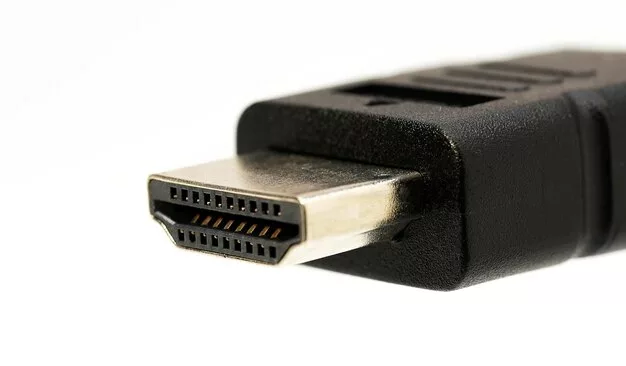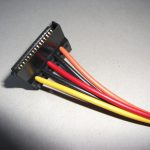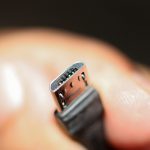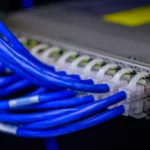
Introduction
The HDMI connector, an indispensable tool for connecting various electronic devices, has become standard in today’s digital age. Whether setting up a home theatre system or gaming console or just trying to connect your laptop to a monitor, HDMI is the go-to interface for high-quality audio and video transmission. This comprehensive guide explores everything you need to know about HDMI connectors – from their types and capabilities to the crucial tips for optimising your HDMI connections.
What is an HDMI and HDMI Connector?
HDMI (High-Definition Multimedia Interface) is a proprietary audio/video interface developed to transmit high-definition audio and video signals between compatible devices. Since its introduction in 2003, HDMI has undergone several revisions, each bringing improvements in terms of data transfer capabilities and added features. HDMI is a technology standard that offers numerous advantages, including high-quality audio/video transmission, robust compatibility, simplicity, and future-proofing. HDMI connectors (a plug or socket on a device) and cables are convenient and reliable means to connect multiple modern consumer devices, facilitating high-definition audio and video transmission for displaying digital content.
HDMI Connector Types: Exploring Their Broad Range Varieties
HDMI connectors come in various types with multiple capabilities for their respective applications. Some of the most popular HDMI connector types include:
Standard HDMI Connectors (Type A)
The Type A HDMI connector, also called the standard HDMI connector, is the most common type that has 19 pins. These connectors support standard and high-definition video resolutions, as well as multi-channel audio and are widely used in TVs, projectors, DVD players, and gaming consoles.
Mini HDMI Connectors (Type C)
The Mini HDMI, or Type C HDMI connector, is a compact, smaller version of the standard HDMI Type A connector. It is commonly found on compact devices like camcorders, digital cameras, and some tablets. Despite its reduced size, Type C HDMI connectors support the same video and audio resolutions as Type A connectors.
Micro HDMI Connectors (Type D)
The Micro HDMI, or Type D HDMI connector, is an even smaller connector than the Mini HDMI Type C connector. It is commonly used in smartphones, tablets, and other portable devices. Despite its diminutive size, Type D HDMI connectors can deliver high-definition (HD) video and audio just like their larger counterparts.
Automotive HDMI Connectors (Type E)
The Type E HDMI connector, also called Automotive HDMI, is a specialised variant designed for use in vehicles. It can withstand the harsh environmental conditions found in automobiles and can transmit audio and video signals between in-car entertainment systems and displays.
Different HDMI Versions and Their Features: A Brief Overview
Over the years, HDMI technology has evolved, leading to different HDMI versions, each offering improved features and capabilities, such as:
- HDMI 1.0: The initial version introduced in 2003, transmitting video up to 1080p resolution and multi-channel audio.
- HDMI 1.4: Introduced in 2009, HDMI 1.4 brought support for 3D video, Ethernet data channel, and Audio Return Channel.
- HDMI 2.0: HDMI 2.0, released in 2013, expanded the bandwidth, allowing 4K video at 60Hz and 1080p at 240Hz. It also introduced support for High Dynamic Range (HDR) content.
- HDMI 2.0a: This minor update in 2015 added support for High Dynamic Range metadata, specifically for better HDR content transmission.
- HDMI 2.0b: Another incremental update in 2016, HDMI 2.0b, included support for Hybrid Log-Gamma (HLG) HDR and Dynamic HDR.
- HDMI 2.1: The latest version, introduced in 2017, offers significant enhancements, including support for 8K video at 60Hz and 4K at 120Hz. It also introduced Variable Refresh Rate (VRR), Auto Low Latency Mode (ALLM), and enhanced audio return channel (eARC) for better gaming and audio experiences.
Choosing the Right HDMI Cable: Crucial Factors to Consider
Selecting a suitable HDMI cable is crucial to ensure optimal performance in your setup. The following tips will help you make the right choice and include:
Check the HDMI Version:
Ensure the chosen HDMI cable is compatible with the version of HDMI your devices support. For example, if you have a 4K TV and Blu-ray player, an HDMI 2.0 or higher cable for 4K resolution support is required.
Consider Cable Length:
Longer HDMI cables can experience signal degradation, so opt for an appropriate length for your setup. For longer distances, consider using an HDMI signal booster or an active HDMI cable.
Build Quality:
Invest in a well-constructed HDMI cable with durable connectors and shielding to prevent interference and ensure long-term reliability.
Certified Cables:
Consider purchasing HDMI cables that are HDMI Authorized Testing Center (ATC) certified to ensure compliance with HDMI specifications.
Look for Additional Features:
Some HDMI cables come with added features like Ethernet support (HEC) or high-speed data transfer capabilities. These features may be useful in specific setups, so choose accordingly.
Optimizing HDMI Connections: Unlocking Top Secrets
To get the most out of HDMI connections, follow these optimization tips:
- Use the Right Ports: Ensure you connect your devices to the appropriate HDMI input/output ports on your equipment. Some devices may have multiple HDMI ports with different capabilities, such as ARC or MHL support.
- Enable HDMI-CEC: HDMI Consumer Electronics Control (HDMI-CEC) allows the control of multiple HDMI-connected devices with a single remote control. Make sure to enable this feature in your device settings for convenience.
- Calibrate Your Display: Adjust your TV or monitor settings to achieve the best picture quality. Many modern displays offer presets for different content types, such as movies, sports, or gaming.
- Update Firmware: Manufacturers often release updates to improve compatibility and add new features. Check for firmware updates for your HDMI-connected devices, like TVs, Blu-ray players, and gaming consoles.
- Secure Your Connections: Ensure the HDMI cables are securely plugged into their respective ports to prevent accidental disconnections.
Bottom Lines
The HDMI connector has revolutionized the way we connect and experience audio and video content. With its various types and versions, HDMI offers a versatile solution for transmitting high-definition multimedia content between a wide range of devices. By selecting the right HDMI cable and following optimization tips, it is possible to enjoy the full potential of this essential connectivity standard in your home entertainment system, gaming setup, or professional workspace. Stay connected with HDMI and elevate your multimedia experience to new heights.





















